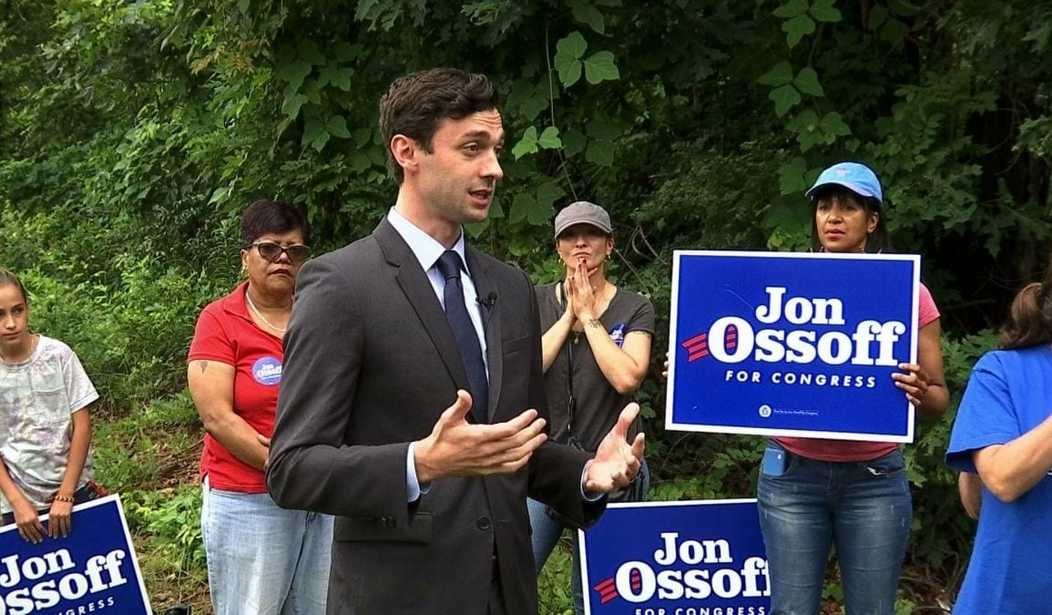In 16 days, voters in Georgia’s 6th Congressional District will go to the polls to vote in the single most expensive U.S. House race in history. The contest between Democrat Jon Ossoff and Republican Karen Handel is likely to cost close to $40 million when all is said and done, with each candidate to spend close to $20 million.
Democrats, having failed in two previous special elections in Kansas and Montana, are vowing this race will be different. Not only are they matching the spending by the GOP candidate — unlike in the two previous elections — but the level of enthusiasm among Democrats is very high.
Couple that with the fact that President Trump only carried the usually reliable Republican district by about 2%, and the Dems think they may have a breakthrough in a race they believe can be used as a template to bring them House control in 2018.
Some Democrats believe the DCCC’s strategy has been smart, given that the party will likely need huge amounts of money to compete in the large number of expected swing districts in 2018.
“If that’s the case and the DCCC is spending millions of dollars in seats that aren’t really winnable based on the information that they have, then that means come next November, they’re not going to have the money to support candidacies against legitimately vulnerable Republicans,” said Bill Burton, who worked at the DCCC in 2006.
But others argue that the party can’t ignore traditionally red districts in places like Montana and Kansas and needs to spend time and resources to develop a large field operation in Republican areas with the hopes of developing them for the future.
“You can’t ignore these parts of the country in between elections and only invest in a couple of races,” said Nomiki Konst, a former Bernie Sanders delegate serving on the DNC unity commission. “When you talk about the issues that affect working people and you do that in between races, they’re going to be attracted to your message.”
The closer-than-expected special election losses have pressure on Ossoff to finally deliver a win for the party this year.
Democrats are outspending Republicans in the runoff, with the DCCC spending another $3.6 million to prop up Ossoff, according to an Atlanta Journal Constitution analysis from late May. Recent polls show Ossoff slightly edging out Handel, but still within the margin of error.Despite the polls, Republicans say they’re going into Georgia’s runoff with cautious optimism. They acknowledge the high energy for their opponent, but note that Handel, a former Georgia secretary of State, quickly consolidated GOP support after the all-party primary and has since raised the resources to compete on the same level as Ossoff.
“The energy level is still probably slightly stronger for Ossoff because of the anti-Donald Trump sentiment, but she has organized the Republicans and has the ground game now and has the resources to define Ossoff properly,” said Heath Garrett, former chief of staff to Sen. Johnny Isakson (R-Ga.).
The 6th district in Georgia has been held by a Republican since 1979. But Trump’s narrow victory in the district last fall has given the Democrats hope that Trump hatred, along with gobs of cash, can bring them the victory they so desperately desire.
They very well may get it. Handel is not the most inspiring candidate (neither is Ossoff) and special elections, with turnout of only about 20%, usually hinge on which side is more motivated to vote. Democrats probably have bragging rights in the motivation department, with ads tying Handel to Trump dominating the airwaves and Trump hatred among the Democratic base at an all-time high.
But win or lose, can the Democrats really use the special election as an example of how to run against GOP incumbents and flip the House?
Not hardly. Georgia 6 is not a typical swing district. While President Trump won the district narrowly, Rep. Tom Price, who resigned to become HHS secretary which necessitated the special election, slaughtered his Democratic opponent by 61-37. Even if the Dems win in Georgia, how are they going to duplicate the advantages they enjoyed? They need to recruit top-flight candidates in dozens of Republican districts who are capable of running a competent campaign and who can raise enough money to be competitive. Clearly, they aren’t going to be able to spend $20 million in every GOP district they target.
But what about “enthusiasm”? No doubt that Trump hate is fueling the activists who are swarming all over Georgia 6, but what about the ordinary voter? Historically, the Democratic base fails to show up for midterms and unless that changes in 2018, Republicans are almost certainly going to maintain control of the House. Because the GOP owns a decided advantage at the state level in legislatures and state houses, they were able to gerrymander most of their congressmen into safe or relatively safe seats. This means that Democrats need a massive turnout of their voters in those districts which, even with anger and fear being ginned up against President Trump, goes against the historic tide.
There’s a chance that things may change in the next 17 months. With Trump, you never know. But the smart money will still be on a GOP victory in 2018 regardless of what happens in the Georgia special election.










Join the conversation as a VIP Member